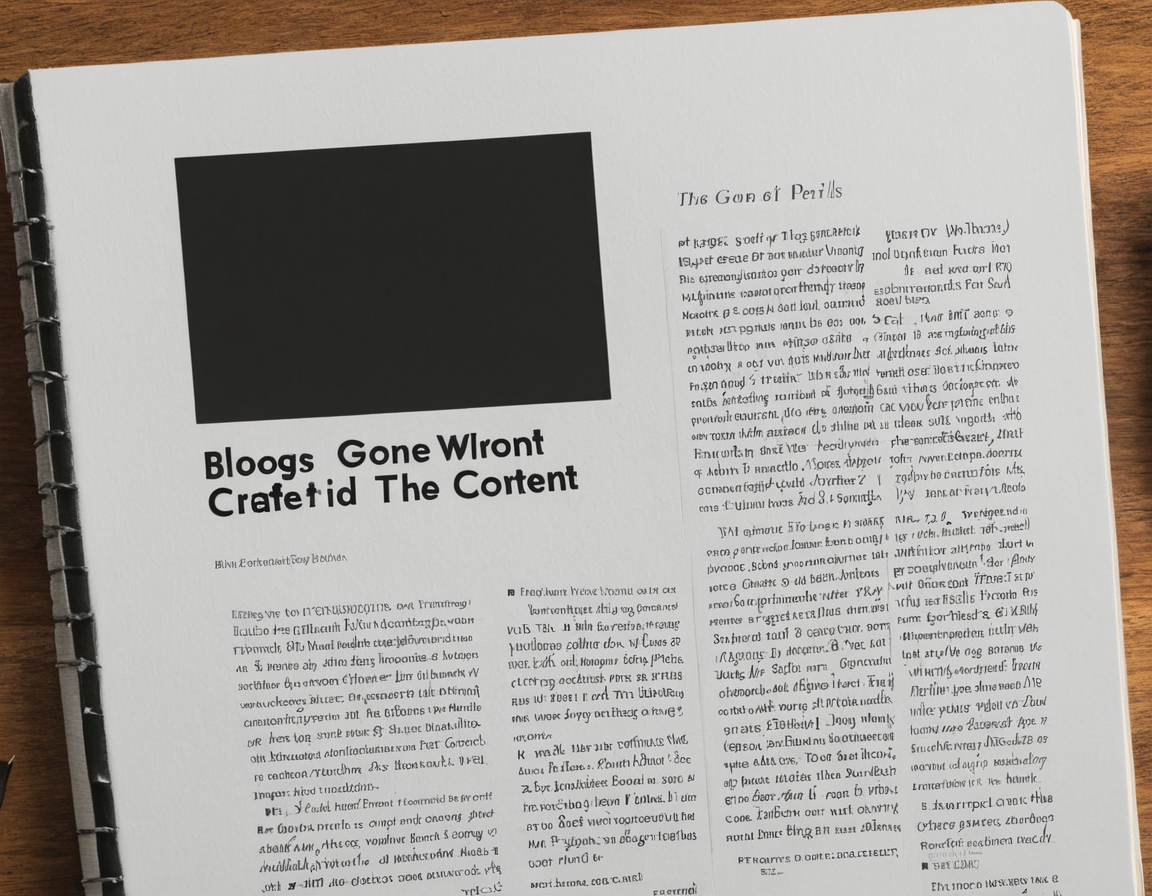: Blogs Gone Wrong: The Perils of Poorly Crafted and How To Avoid Them

Introduction: In the vast world of blogging, quality is often overshadowed by quantity. With millions of blogs created every day, it’s easy for newbie bloggers to lose sight of what truly matters – crafting engaging, relevant, and high-quality that resonates with their audience. Poorly written or researched posts can lead readers away from your website, damage brand reputation, and ultimately hinder the growth and success of any online platform. This post will delve into common mistakes to avoid when creating blog in order to keep your readers coming back for more.
1. Grammatical Errors: While it may seem obvious, even minor grammar or spelling errors can severely impact a reader’s ability to fully comprehend and appreciate the you are presenting. Proper editing should always be done before publishing any blog post; using tools like Grammarly or having a trusted proofreader review your work prior to publication is highly recommended.
2. Plagiarism: Always ensure that the information you present in your blog posts is original and properly cited when quoting other sources. Not only does plagiarism violate copyright laws, but it also damages credibility within your audience as they lose trust in your ‘s authenticity.
3. Lack of Focus or Organization: A disorganized post can leave readers feeling overwhelmed and confused. Always ensure that your blog posts have a clear focus and are structured logically with headings, subheadings, and bullet points to break up large blocks of text. This makes it easier for readers to skim through the and find specific information they need.
4. Writing in Passive Voice: While passive voice has its place in certain contexts, it is generally discouraged when writing blog posts as it can make your prose overly complex and difficult to understand. Active voice should be used instead; this makes for more engaging, direct, and concise that captures readers’ attention quickly.
5. Overusing Jargon or Technical Terms: While some industry-specific terminology may be necessary in certain instances, overuse can alienate a broad audience who lacks the necessary background knowledge to understand your post fully. Whenever possible, explain complex concepts using simpler language and real-world examples that readers can easily relate to.
6. Lack of Visual Aids: Breaking up large blocks of text with relevant images or videos not only enhances reader engagement but also makes it easier for them to grasp the information you’re presenting. Ensure that any visuals used are high quality, properly licensed, and directly related to your blog post topic.
7. Ignoring SEO Best Practices: To maximize visibility and reach new audiences, incorporate relevant keywords into your while ensuring they fit naturally within the context of your writing. Use tools like Google Keyword Planner or SEMrush to identify popular search terms in your niche, then strategically integrate them throughout your post without compromising its quality or readability.
Conclusion: As blogging continues to evolve as a powerful medium for sharing ideas and connecting with people around the globe, it’s crucial that creators prioritize crafting high-quality posts that deliver value to readers. By avoiding these common pitfalls, you can establish yourself as a reputable source of information within your niche while building trust and loyalty among your audience.
Remember, quality always trumps quantity; invest time in creating well-researched, engaging that stands out from the sea of mediocre blog posts flooding the internet today. In doing so, you’ll be setting yourself up for long-term success within the competitive world of online publishing.

